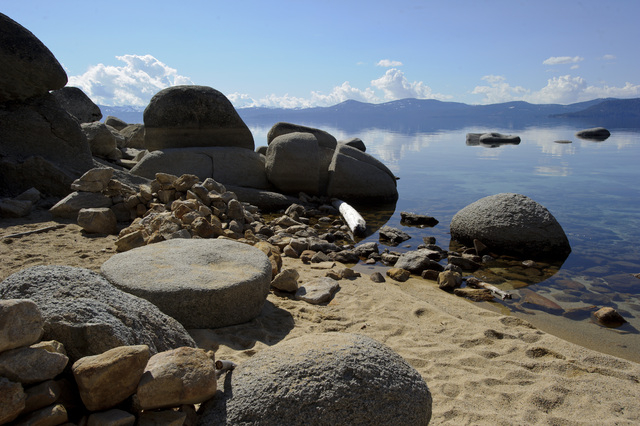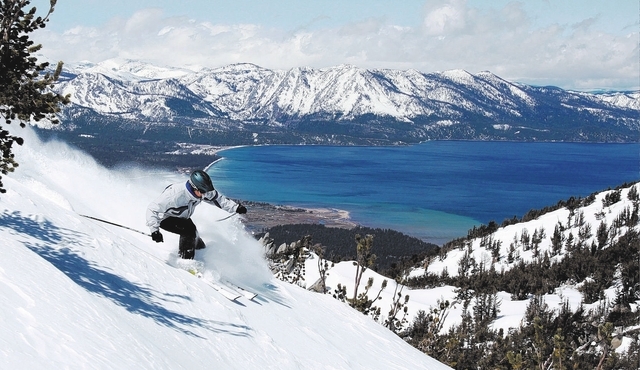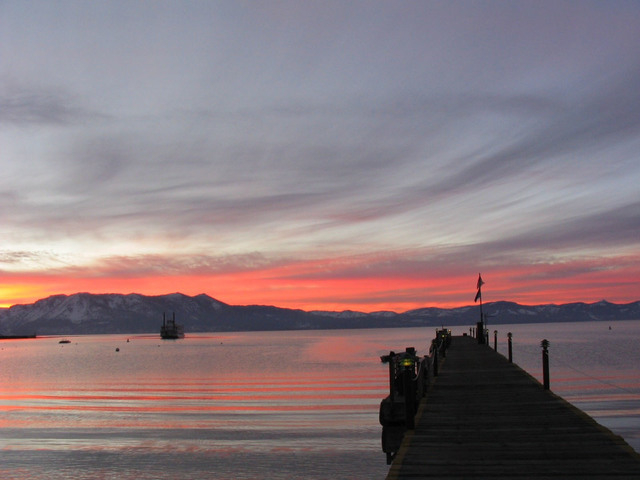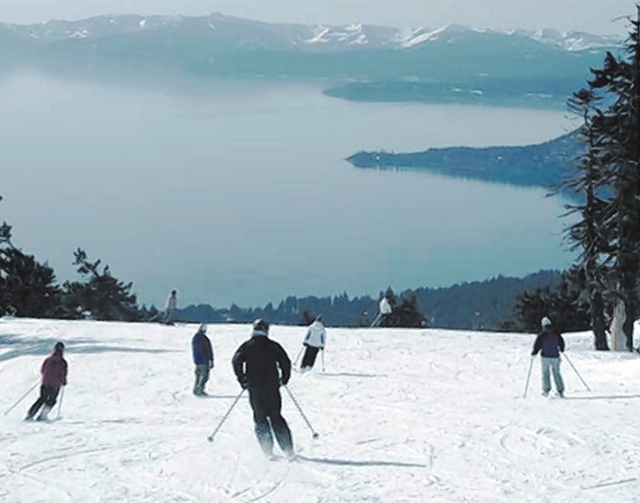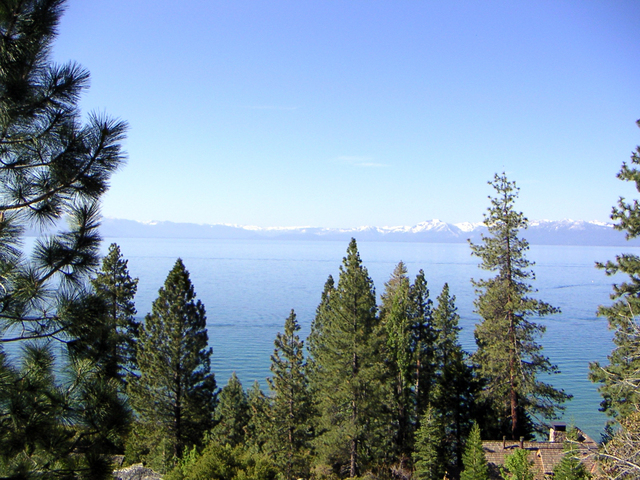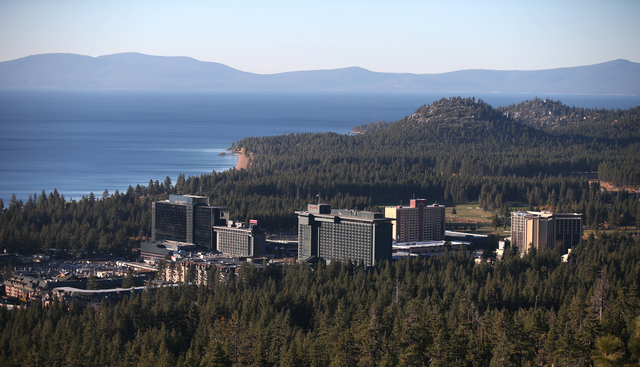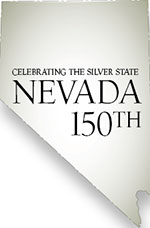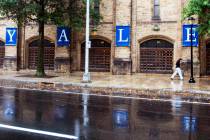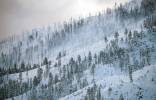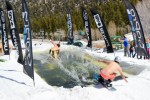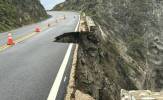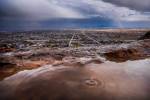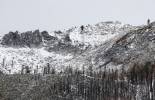Lake Tahoe: Twain called it the ‘fairest picture the whole world affords’
Editor’s Note: Nevada 150 is a yearlong series highlighting the people, places and things that make up the history of the state.
CARSON CITY
“Tahoe — it sounds as weak as soup for a sick infant. Tahoe, be forgotten!”
That was how a disgusted reporter named Mark Twain wrote of the huge mountain lake on the Nevada-California border in a story in Virginia City’s Territorial Enterprise in September 1863.
This Twain guy, hopefully in jest, could not stand people who were calling the beautiful lake “Lake Tahoe,” as the local Indians had called it for thousands of years. He was one of the supporters of calling the place “Lake Bigler,” in honor of a California governor.
Lake Bigler? Yuck.
Fortunately, in the years following Twain’s outburst, just about everyone started calling the 12-mile-by-22-mile bistate lake Lake Tahoe.
Californians didn’t get it. Their Legislature officially did not end the Lake Bigler designation until 1945.
Tahoe, a sweet-sounding word if there ever was one, is the Anglo mispronunciation of “Da ow ga,” the Washoe Indian word for lake.
Whatever the lake is called, it remains what a nicer Twain referred to in 1871’s “Roughing It”: “surely the fairest picture the whole world affords.”
Lush forests surround the lake, the sky usually is cobalt blue and the water crystal clear. Visit. Just avoid the July 4 weekend when thousands of college students arrive to drink and party all night in cabins along the beaches. MTV often films their festivities.
Lt. Gov. Brian Krolicki speaks almost as eloquently as Twain about the lake, where he has lived for most of his working career.
“My first sighting of Lake Tahoe was as a 17-year-old college freshman. It really was love at first sight. I have been fortunate to travel all over the world, and in my mind Tahoe is still one of the most incredible places I have seen. Mother Nature did an incredible job. You can have a really tough day at work, but coming into the (Lake Tahoe) basin, everything is OK.”
The picture that Twain and the Washoe saw has become fairer in recent years because of $1.7 billion Nevada, California and the federal government have spent on erosion control, hazardous fuel reduction and other programs.
President Bill Clinton convened the first Tahoe Summit in 1997, and that led to the mammoth spending to improve the quality of the lake. Much of the money comes from the sale of federal land in Las Vegas.
Scientists in 2012 could see a disk dropped down 75 feet into the lake, a six-foot improvement from the previous year, but still not close to the 102-foot depth in 1968.
INDIANS CLAIM LAKE TAHOE
In a memorable prayer at the Tahoe Summit in 2010, Washoe Elder Charles Walker demanded that the federal government, private landowners and others return the lake to Washoe tribal ownership.
On its website, the Washoe maintain intruders are occupying their land and lake.
“Before occupation, the Washoe people lived a seasonal and nomadic life of hunting and plant-gathering. Summer was spent at Lake Tahoe hunting, fishing, and collecting medicinal plants, roots, and berries for the winter season.”
In 1970, a federal commission gave the tribe $5 million for its Tahoe land rights. Today, many lakeside mansions sell for more than that. Movie fans recall the producers of “The Godfather II” used a rented mansion on the California side of the lake for the Corleones’ home.
It was not until 1844 that a white man saw the lake, sometimes referred to as “the jewel of the Sierra.” Explorer John C. Fremont and his party spied the lake from a mountain about 30 miles away. But they were trying to get out of the winter snow, so they never actually visited Lake Tahoe.
Soon, thousands of emigrants on their way to gold fields in California were stopping at the lake. Californians, like the Indians before them, quickly became summer visitors, too.
The “Bonanza Road,” an east-west route from Nevada past the lake and into Placerville, Calif., was carved out by 1859.
But few people then dared travel to snowy Lake Tahoe and on to Sacramento, Calif., in the winter. So the legendary John “Snowshoe” Thompson carried 60-pound packs of mail during the winters on a 90-mile trek from Genoa through the mountains.
Even casinos, which opened at Stateline on the Nevada side with the legalization of gaming in the 1930s, closed in winters.
The first hotel, the Cal Neva Resort on the north shore of the lake, was built in 1926 and initially was known as Ta Nev Ho.
The unique feature of this resort is it is built over the state line. One can drink at a bar in California and then walk a few feet to gamble on slot machines in Nevada.
KENNEDY VISITED MARILYN?
Frank Sinatra bought the resort in the 1960s. It soon became a playground for his Rat Pack and Hollywood celebrities. The often-repeated gossip is that Marilyn Monroe came to the Cal Neva for trysts with Sinatra. Legend has it she also met secretly there in 1962 with President John F. Kennedy.
Now closed for renovations, the Cal Neva Resort is set to reopen in December.
Harvey’s on the south shore opened in 1944, and Bill Harrah renovated an older hotel across the street in 1955. Harrah’s once was Nevada’s only five-star hotel.
Harvey’s has the distinction as the only casino ever to suffer major damage from a bombing.
At 4:45 a.m. on Aug. 27, 1980, a group of men wheeled an “IBM machine” into the executive offices of the resort without being detained by security guards. The machine was loaded with 600 pounds of dynamite. Mastermind John Birges demanded a $3 million ransom.
He didn’t get it and sheriff’s deputies could not disarm the machine. The bomb blew a 50-foot crater through five floors of the resort and blew out every window in the building. It was repaired and reopened by the end of the year.
Birges was angry over losing $750,000 in the casino.
Even earlier, Tahoe had become a tourist paradise. By the 1890s, stores and hotels had gone up around the lake to serve San Francisco tourists.
Visitors by the early 1900s could watch famous Washoe basket weaver Dat So La Lee work in front of a window in a Lake Tahoe shop.
Most of the vast forest of trees surrounding Lake Tahoe were gone by the 1890s. Virginia City mines needed timber to shore up their underground mines. The lumber also was used to create a giant flume to move water to Virginia City.
Old pictures show a barren landscape around the lake. Today the trees are back, but many suffer from bark beetle disease and gradually are being removed.
The fear of everyone in the Tahoe Basin is fire, particularly because of the dead trees and careless tourists.
In recent decades, at least, fire largely has been avoided. The Angora fire in July 2007 destroyed 242 homes near the town of Meyers on the California side of the lake, but people were thankful that it was not the big one they all feared.
Snow skiing arrived in 1910 when a ski hill opened at Truckee, north of the lake. By 1924, the first ski resort, called Olympic hill (now Granlibakken) opened at Tahoe City on the east shore. It would host the Winter Olympics trials in 1931.
But skiing was a sport largely for a few rich people until a New York lawyer named Alex Cushing persuaded the International Olympic Committee to allow him to host the Winter Olympics at Squaw Valley, six miles north of Tahoe’s north shore in 1960.
Skiing now is a billion-dollar plus industry at Lake Tahoe. Fifteen ski resorts dot mountains around the lake. The ski season usually opens by Thanksgiving and does not close until April, even as late as July 4 in snowy years.
The resorts typically receive 400 inches of snow each winter, but the past two years have been largely snow-free before December. Snow fell this fall in mountains around the lake, so residents hope for a snowy year.
Daily lift tickets run more than $80 at Heavenly and Squaw, but bargains can be found at some resorts, and discount season pass tickets are available everywhere.
Two-thirds of the lake belongs to California under deals worked out when Nevada received statehood in 1864. There is enough water in Lake Tahoe to cover the entire state of California to a depth of 14 inches.
About 70,000 people live in communities around the lake. Lakefront property runs in the multiple millions of dollars. Donald W. Reynolds, the late owner of the Review-Journal, had a lakefront estate at Incline Village. Gaming magnate Steve Wynn then was his neighbor.
It’s only natural that many Northern Nevadans derisively refer to Incline Village as “Income Village.”
But average people, too, can enjoy the lake’s beaches, even if it is only through buying a ticket to visit the Sand Harbor State Park on the north shore, Nevada Beach on the south store or any of several beaches in California. Just don’t come on July 4.
Contact Capital Bureau Chief Ed Vogel at evogel@reviewjournal.com or 775-687-3901. Follow him on Twitter at @edison vogel.



